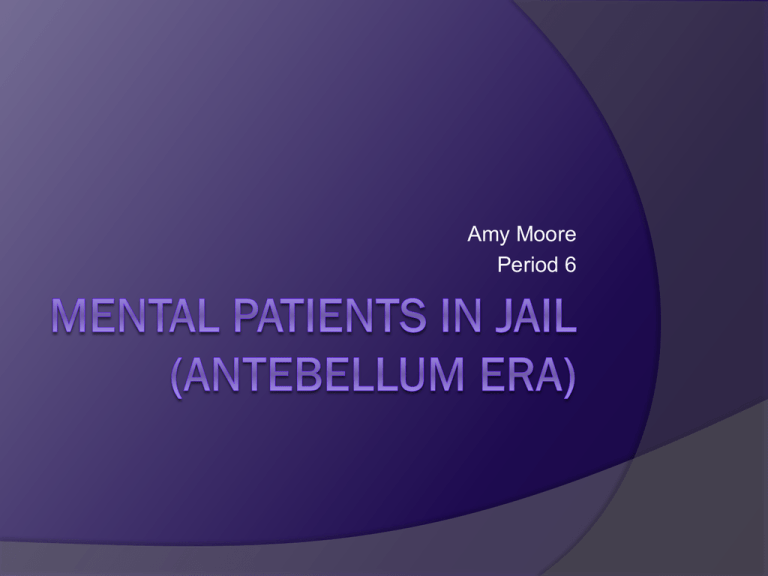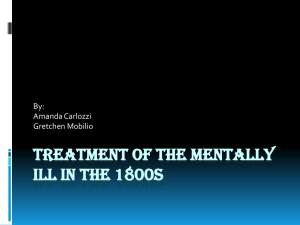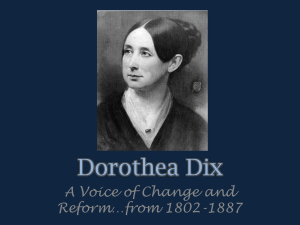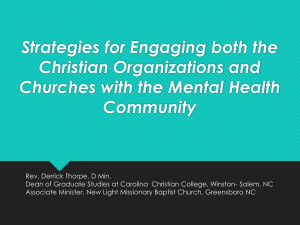Prison_MOORE - USHistory2010-11
advertisement

Amy Moore Period 6 Problem Dorothea Dix began visiting prisons in 1841, and she found that mentally ill persons were still treated as criminals. She visited more than 800 jails and almshouses, or homes for the poor People with mental disabilities were treated poorly because people didn’t understand how to control them Dorothea Dix March 1841 – East Cambridge Jail The mentally ill were all housed together in an unheated, unfurnished, and foul – smelling quarters “the insane do not feel heart or cold” Causes/Impacts The popular belief was that the insane would never be cured and living within their dreadful conditions was enough for them Dorothea’s views of the mentally ill were radical at the time Her opinions were dramatic Her Solution She didn’t know the mental processes that were occurring within these individuals she knew that improving their conditions wouldn’t hurt them She started out by going to where the mentally ill were housed in different parts of Boston Sent all of her data & delivered it to the Massachusetts legislature. Her material won legislative support and funds were set aside for the mentally ill. Traveled to other states and went to jails and almshouses in a state, created descriptions of the conditions, and prepared a document comparable to the one which proved successful in Massachusetts. Covered all states on the east side of the Mississippi River. Funded 32 mental hospitals, 15 schools for the feeble minded, a school for the blind, and numerous training facilities for nurses Culmination Bill for the Benefit of the Indigent Insane Set aside acres of Federal land (benefit of the insane, and the “blind, deaf, and dumb”) Proceeds distributed to the states to build and maintain asylums. Bill passed both houses of Congress 1854, President Franklin Pierce vetoed it ○ Federal government should not commit itself to social welfare (properly the responsibility of the states) Effect of her movement Indirect inspiration for the building of many institutions for the mentally ill Created the first generation of American mental asylums Established: Libraries in prisons Mental hospitals Training facilities Relevance Today Not all mental prisoners are being accommodated for Receive abuse from staff due to their inability to function in a prison setting “managing mental disabilities in prisons requires corrections therapies for disabled prisoners, but unfortunately most prisons today are not equipped to handle the escalating number of prisoners who exhibit signs of mental health problems.” Many go untreated Placed in segregated cells where they are confined rather than treated Questions 1. Was the Bill for the Benefit of the Indigent Insane passed or vetoed? 2. How were mentally ill prisoners treated? (the problem) 3. What was the outcome of all the work Dorothea Dix did for the mentally ill? References http://www.webster.edu/~woolflm/dorothea dix.html http://www.visitingdc.com/president/franklin -pierce-picture.htm http://www.licensedpracticalnurse.org/famo us-nurses http://en.wikipedia.org/wiki/Dorothea_Dix http://www.insideprison.com/ http://www.mhcca.org/correctionstherapies-for-disabled-prisoners.html











